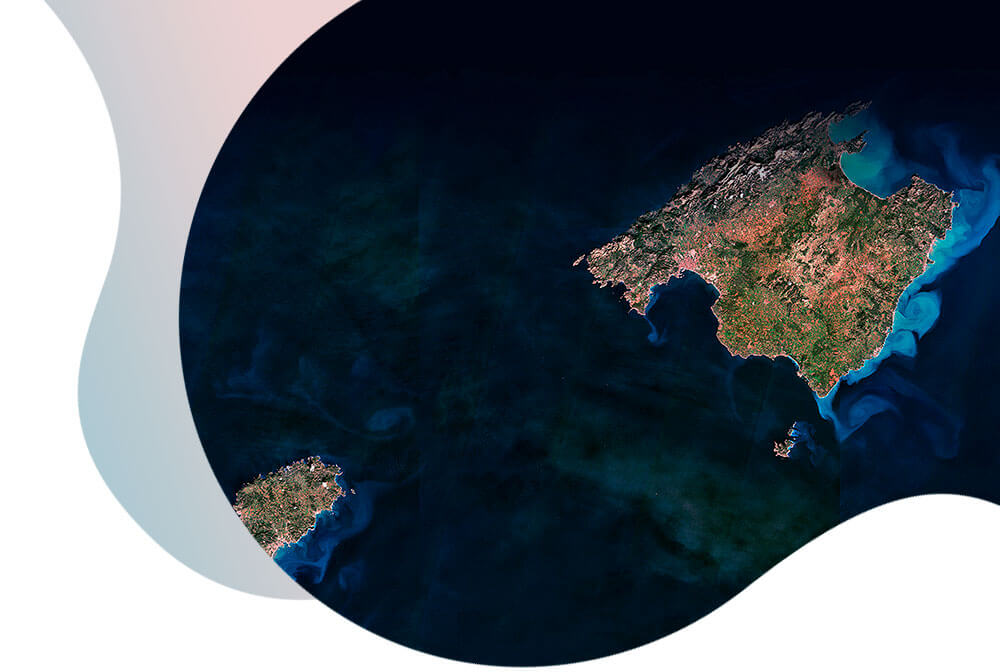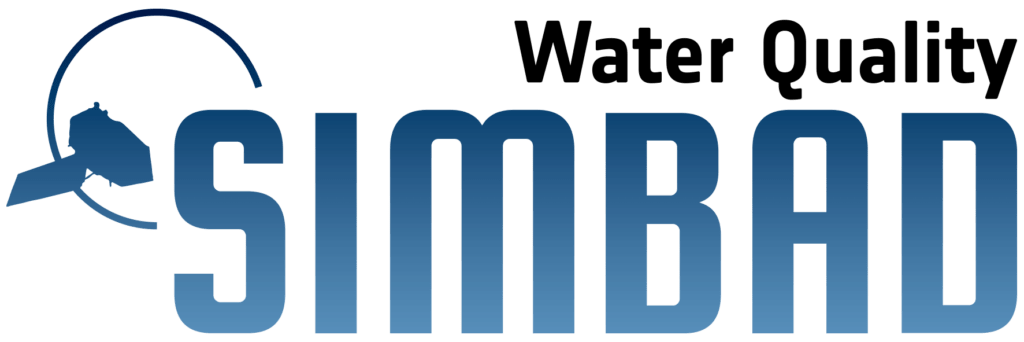Water Quality
Coastal and Inland
Water Bodies
MONITORING AND CLASSIFICATION
Water Quality
MONITORING COASTAL AND INLAND WATERS
Sentinel-2 (MSI) and Sentinel-3 (OLCI) provide global, regular and repeated coverage of inland, coastal and open sea waters under cloud-free sky. One of the many applications of both these satellites data is for water quality monitoring, making it suitable to measure and monitor different water quality parameters i.e., Chlorophyll (Chl-a) as a proxy of primary productivity, Turbidity (T), Total Suspended Matter (TSM), Coloured Dissolved Organic Matter (CDOM), and Sea Surface Temperature (SST).
By measuring different physical and chemical parameters of the lakes, rivers, coastal areas, estuaries, and open sea waters, it is possible to monitor the water quality status as well as the eutrophication of the respective water bodies, assess ecosystem productivity, and identify, for example, potential sites for fish farming. Also, turbidity and sediment load measurements are useful in dealing with coastal problems like delta growth and retreat, beach erosion, and modification of harbor basins.
S2 and S3 routinely collects large amounts of images which are made freely available. The vast amounts of data produced by the constellation of satellites are a great opportunity to develop systems for Water Quality Monitoring.
To become fully operational, these processing systems must be entirely automatic with a controlled level of reliability and robustness.
SIMBAD can provide current and time series maps of different water quality estimators for a wide range of areas, including European and Global coastal and open seawaters. SIMBAD also provides water quality monitoring systems by developing region-specific algorithms.
See PDF

SENTINEL-2
5 day revisit at equator
SENTINEL-3
Sea and land surface temperature radiometer (slstr)
Ocean and land colour instrument (olci)
Synthetic aperture radar altimeter (sral)
- slstr, ku and c band with a 300 m spatial resolution
- olci, a 300 m spatial resolution and 21 spectral bands
- sral, sar altimeter and the microwave radiometer


Products | Applications | Services
Water Quality Monitoring Products
Water quality parameter maps.
- Maps of Harmful Algae Blooms (HABs)
- Maps of Chlorophyll-a (Chl-a) concentrations
- Maps of Total Suspended Matter (TSM) concentrations
- Maps of Turbidity level
- Maps of Coloured Dissolved Organic Matter (CDOM) concentrations
- Maps of Sea Surface Temperature (SST)
Quasar provides Water Quality Monitoring services for the above-mentioned parameters. On special requests or demands, Quasar also provides region-based monitoring systems by developing specific regional algorithms.
Besides, Quasar also provides a package of satellite and model derived environmental forces data i.e., Salinity, Ocean Currents, Photosynthetic Active Radiation (PAR), and wind mixing index (WMI), along with the water quality products (HABs, Chl-a, TSM, Turbidity, and SST), providing useful information for decision making in the management of coastal natural resources.
Water Quality Monitoring Applications
Different Water Quality Monitoring products can be used for different applications. Some example applications are:
- Harmful Algae Bloom (HABs) monitoring
- Eutrophication monitoring
- Ecosystem monitoring
- Aquaculture site selection
- Identification of delta growth and retreat
- Identification of beach erosion
- Sediment load estimation
- Water quality monitoring
Water Quality Monitoring Services
- Dedicated tailor-made solutions for satellite and model-based Water Quality applications
- Consulting services about Sentinel-2, Sentinel-3 and their applications
- Support the integration of Sentinel-2 and Sentinel-3 data into your solution
- Support the integration of Copernicus Marine Service products into your solution
- Participation in R&D projects at national and European levels with experience leading projects and working within large collaborations
Water Quality Monitoring | Application Examples
Mapping Water Quality
Turbidity and Algal Bloom
Prolonged turbidity episodes can cause hypoxia and inhibit the growth of phytoplankton in coastal regions, thus negatively affecting the productivity of the aquatic ecosystem. Examining
the turbidity levels can assists coastal managers and policy makers to control the challenging issue of water quality monitoring.
HABs can represent a potential health risk.
Aquaculture Site Selection
By examining different physical and biochemical parameters derived from a combination of satellite products, it is possible to identify potential regions for specific fish farming.
Different products from a combination of different satellites and modeled data can be used as a proxy of ecosystem productivity.









